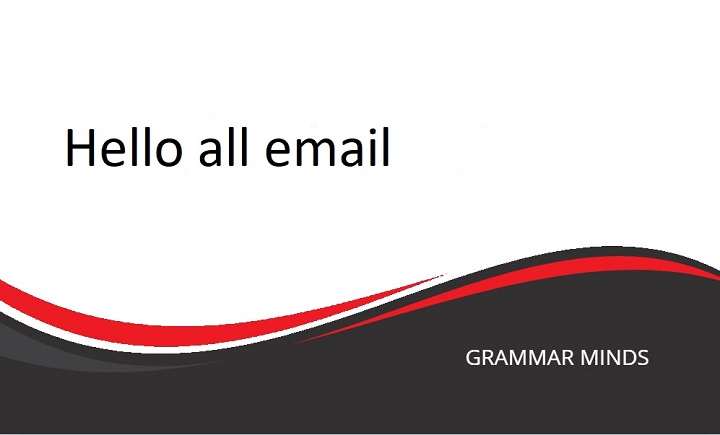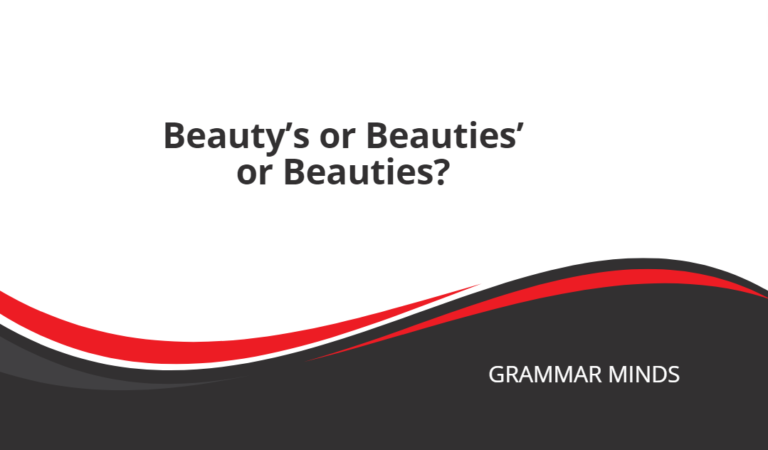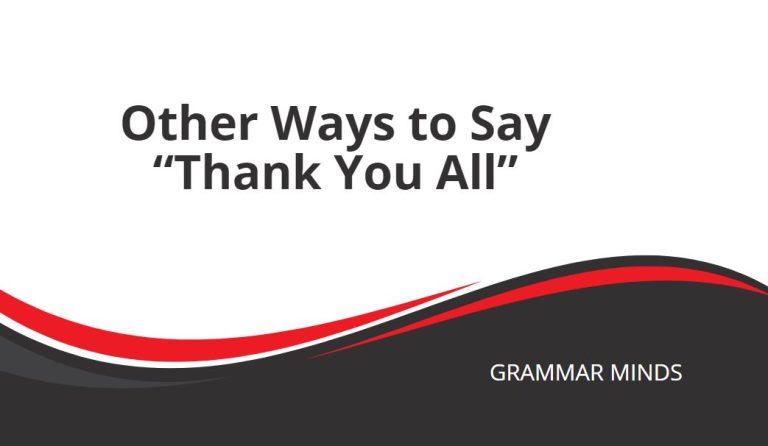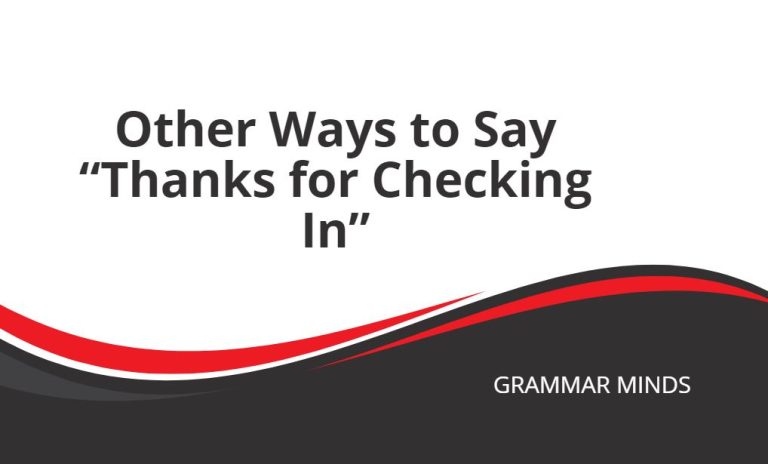Emails are a staple of professional communication, whether you’re corresponding with colleagues, clients, or networking contacts. However, have you found yourself starting emails with the phrase “Hello All” repeatedly? While it’s a grammatically correct and neutral way to greet a group of people, using the same phrase over and over can feel a bit monotonous.
Do you find yourself using the phrase “Hello All” repeatedly in your professional emails? Have you grown tired of this repetitive expression when communicating in the workplace? Don’t worry! We’ve compiled a handy list of alternative greetings that you can use to mix things up and sound more engaging in your emails. By diversifying your language, you can leave a lasting impression and create more engaging conversations with your recipients.
In this article, we will explore various alternatives to the phrase “Hello All”, and how you can incorporate them in both formal and informal email settings.
Other Ways to Say “Hello All”
- Greetings Everyone
- Hi Everyone
- Dear Team
- Good Morning Everyone
- Hello Team
- Hi All
- Good Day All
- Hey Everyone
- To All
- Hello Everyone
Each of these phrases serves as a suitable substitute for “Hello All” depending on the context and tone of your email. Let’s dive deeper into when and how you can use these alternatives to elevate your email communication.
Key Notes
“Hello All” is grammatically correct and suitable for both formal and informal situations. However, it can sometimes feel basic or impersonal, especially if you’re looking to make a more significant impact with your message.
- You can use “Greetings Everyone” for formal situations, particularly in professional emails or formal announcements.
- “Hi Everyone” is a great informal alternative for emails or conversations with colleagues or teams in a relaxed environment.
- Keep reading to discover how to use these phrases in both formal and informal situations and see real-life examples of how they can be applied.
Greetings Everyone
Usage: If you’re looking for a more formal way to say “Hello All,” try using “Greetings Everyone”. This phrase adds a touch of formality and professionalism, making it ideal for business emails, important announcements, or addressing large teams during meetings.
Example (in an email):
Dear Team,
I hope this message finds you well. Thank you for your hard work on the recent project. I appreciate all your efforts, and I look forward to discussing our next steps during the upcoming meeting.
Greetings Everyone and please do not hesitate to reach out if you have any questions.
Best regards,
[Your Name]
Why It Works:
This phrase emphasizes formality and respect, making it suitable for professional environments where a high level of decorum is expected. It is an excellent way to address larger groups in more serious contexts.
Hi Everyone
Usage: A more informal alternative to “Hello All” is “Hi Everyone.” This phrase works well in emails where you are communicating with people you are familiar with, such as colleagues or team members in a casual work setting.
Example (in an email):
Hi Everyone,
Just a quick reminder that we’ll have our team meeting tomorrow at 10 AM. Looking forward to catching up and discussing our progress!
Hi Everyone, and please let me know if you need anything ahead of the meeting.
Best,
[Your Name]
Why It Works:
“Hi Everyone” is friendly and conversational, making it an excellent choice for teams or groups that work closely together. It creates a welcoming and approachable tone.
Dear Team
Usage: When addressing a specific team within your workplace, “Dear Team” can be a great alternative to “Hello All.” It adds a personal touch while still remaining professional.
Example (in an email):
Dear Team,
I want to take a moment to express my gratitude for all your efforts on the project. Your dedication and teamwork have been instrumental in reaching our goals.
Dear Team, let’s continue the great work and keep pushing forward!
Best regards,
[Your Name]
Why It Works:
“Dear Team” acknowledges the collective effort of a group, making it an excellent phrase for team-specific communication. It’s personal and still maintains a sense of professionalism.
Good Morning Everyone
Usage: When sending an email early in the day, using “Good Morning Everyone” can be a polite and timely way to greet your recipients.
Example (in an email):
Good Morning Everyone,
I hope you’re all having a productive start to your day. Just a quick note to remind you about the new changes to our process. Please review the document attached and let me know if you have any questions.
Good Morning Everyone and have a great day ahead!
Warm regards,
[Your Name]
Why It Works:
By incorporating the time of day, “Good Morning Everyone” feels more thoughtful and attentive. It’s a professional and engaging way to start an email conversation early in the day.
Hello Team
Usage: For a mix of formality and friendliness, “Hello Team” can be used to address colleagues in emails where you’re looking to balance professionalism with a conversational tone.
Example (in an email):
Hello Team,
I wanted to follow up on the progress of our latest project. Please provide updates by the end of the day so we can discuss the next steps in tomorrow’s meeting.
Hello Team, keep up the great work and don’t hesitate to reach out if you need any support.
Best regards,
[Your Name]
Why It Works:
This phrase is ideal for addressing a group while maintaining a tone that is both professional and warm.
Hi All
Usage: Another casual alternative, “Hi All” is a great way to informally greet a group in situations where formality isn’t as important.
Example (in an email):
Hi All,
Just a quick reminder about the meeting scheduled for tomorrow at 9 AM. See you all there!
Hi All, and please let me know if you have any questions.
Best,
[Your Name]
Why It Works:
“Hi All” is an approachable and easy-going greeting that works well in casual workplace settings. It’s ideal for internal team communications
Good Day All
Usage: For a more formal yet cheerful greeting, “Good Day All” can work well in both written and spoken communication.
Example (in an email):
Good Day All,
I’m excited to announce that we’ve reached a significant milestone in our project. Your hard work has been truly appreciated, and I look forward to continuing our momentum.
Good Day All and keep up the excellent work.
Kind regards,
[Your Name]
Why It Works:
“Good Day All” is a polite and respectful phrase, making it suitable for formal email correspondence while keeping the tone uplifting.
To All
Usage: A more straightforward and direct approach, “To All” is ideal for short, concise emails or announcements.
Example (in an email):
To All,
Please be informed that the office will be closed tomorrow for maintenance. Make sure to plan accordingly.
To All, feel free to reach out if you have any concerns.
Best regards,
[Your Name]
Why It Works:
“To All” is direct and efficient, making it ideal for brief announcements or updates that don’t require a lengthy introduction.
Hey Everyone
Usage: In informal settings or when addressing colleagues you’re close to, “Hey Everyone” can be a relaxed and friendly greeting.
Example (in conversation):
Hey Everyone,
I just wanted to say thanks for all your hard work this week. You’ve all been amazing!
Hey Everyone, let’s catch up tomorrow!
Best,
[Your Name]
Why It Works:
“Hey Everyone” is casual and approachable, making it perfect for informal group communication, whether via email or spoken conversation.
Is It Correct to Say “Hello All”?
Yes! “Hello All” is grammatically correct and suitable for both formal and informal settings. It’s a versatile phrase that can be used in professional emails, conversations with colleagues, or casual chats with friends. However, using the alternatives listed above can help you mix up your greetings, keeping your language fresh and your emails more engaging.
You can also try slight variations of this phrase, like the following:
- Hello Everyone
- Hi Everyone
- Dear All
Also Read
Alternative Phrases for “Thank You for Reaching Me Out”
In conclusion, “Hello All” is a perfectly acceptable and grammatically correct phrase, whether you’re using it in a formal or informal setting. However, the alternative greetings provided in this article can help you diversify your vocabulary and communicate more effectively in different contexts. By switching up your greetings, you can create a more engaging, thoughtful, and professional tone in your emails and other forms of communication.
Remember, a small change in how you greet your recipients can make a significant difference in how your message is received.







